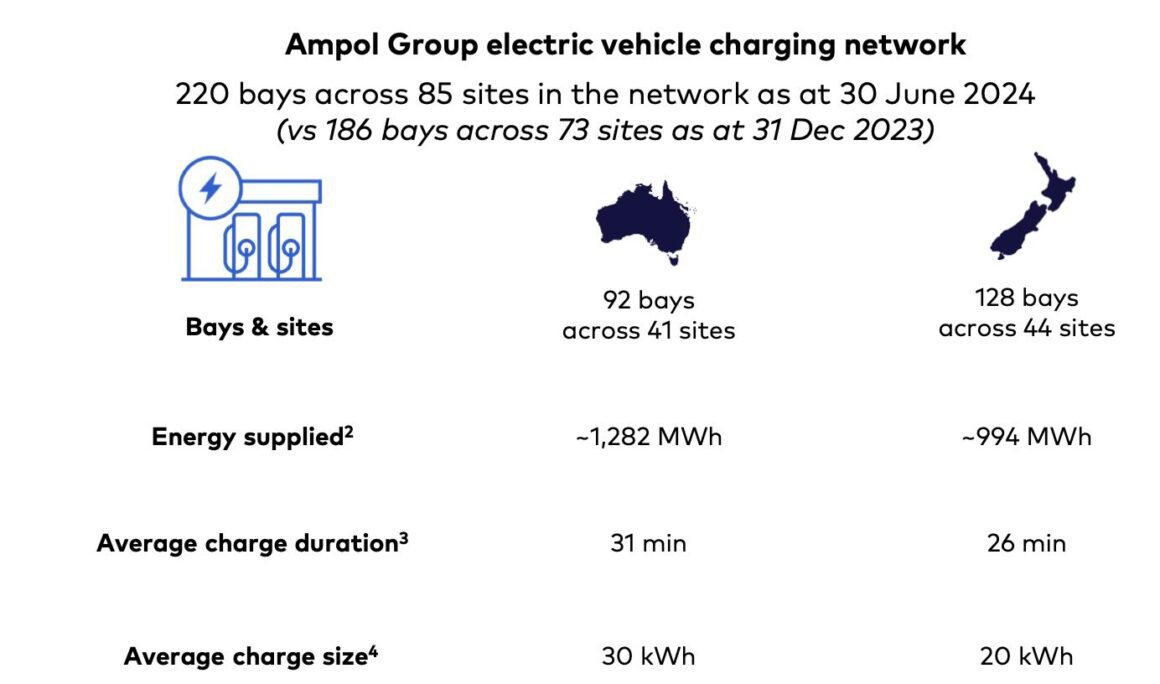Fuel retailing giant Ampol says delays in getting grid connections continues to hold up the rollout of its electric vehicle fast charging network, and it won’t reach its targeted 300 charging bays until 2025.
The company had flagged the issue in last year’s annual report, when it fell well short of its target of 180 EV charging bays by the end of 2023. And, just a few weeks after landing a new funding deal from the federal government through the Clean Energy Finance Corporation (CEFC), it appears the problem has not been resolved.
“The progress of the EV fast charging network development is slower than we expected, given the difficulties in connecting to the grid in Australia in particular,” Ampol CEO Matt Halliday told investors on a conference call to discuss its interim results for the 2024 calendar year.
“We have a pipeline of approximately 100 bays that are either awaiting grid connection, or under construction,” he said. “This provides some window into the challenges of delivering the enabling infrastructure to support the transition.”
Ampol is not the only company rolling out EV fast charging networks that has complained about grid connections – with some ultra fast charging equipment limited to the amount of capacity that can provide, and others such as NRMA installing integrated battery systems to take the load off the grid.

Halliday noted that EVs still represent just 0.9 per cent of the passenger car fleet in Australis – just over two per cent in New Zealand, and that the sales growth has moderated, which could affect the speed with which it transforms its retail outlets.
The graph above shows the growth in numbers of EVs per fast-charging bays in Australia – now at 148 EVs for every fast charger. Ampol added just 34 bays across Australia and New Zealand in the first half of 2024.
Still, the longer stays for EV charging, which its data suggests averages around 31 minutes, opens up new opportunities for its convenience stores, which have traditionally been dependent on tobacco sales. Halliday says that tobacco share is now down to 25 per cent of total sales, and low margin, thanks to the growth of illegal re-sellers.

Halliday says the uptake for its fast charging bays is around 98 to 99 per cent, but alluded to some unspecified issues with certain chargers and geographies.
In terms of utilitization, Ampol reported a number of 7 per cent across its network. “It’s actually well above what we expected to see at the moment,” Halliday said.
“I think we take some encouragement from that. I think some of the international modeling and experience shows that there’s a 10% return on the electrons at a 10% rate of utilization, and then up to 15% when you take account the convenience retail benefits, where the EV customer looks to be spending more like 30% more, if you like, on average.
“That is sort of consistent with what we’re seeing. So we think that’s an interesting opportunity. Obviously, there still aren’t many vehicles in the in the country, less than 1% of the fleet, but at 7% the you know that’s that’s above what we would have, what we would have anticipated to see at this stage.”

Giles Parkinson is founder and editor of The Driven, and also edits and founded the Renew Economy and One Step Off The Grid web sites. He has been a journalist for nearly 40 years, is a former business and deputy editor of the Australian Financial Review, and owns a Tesla Model 3.


